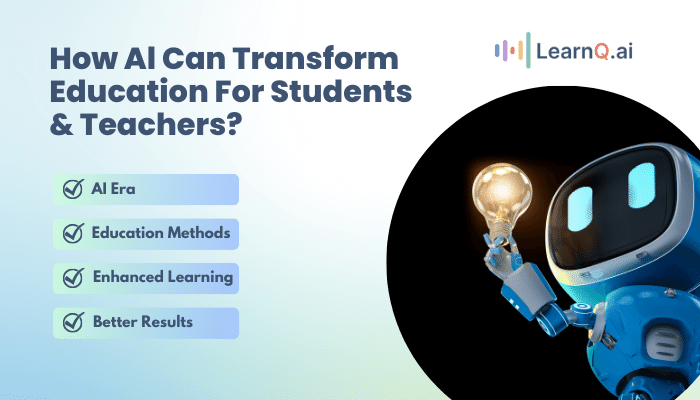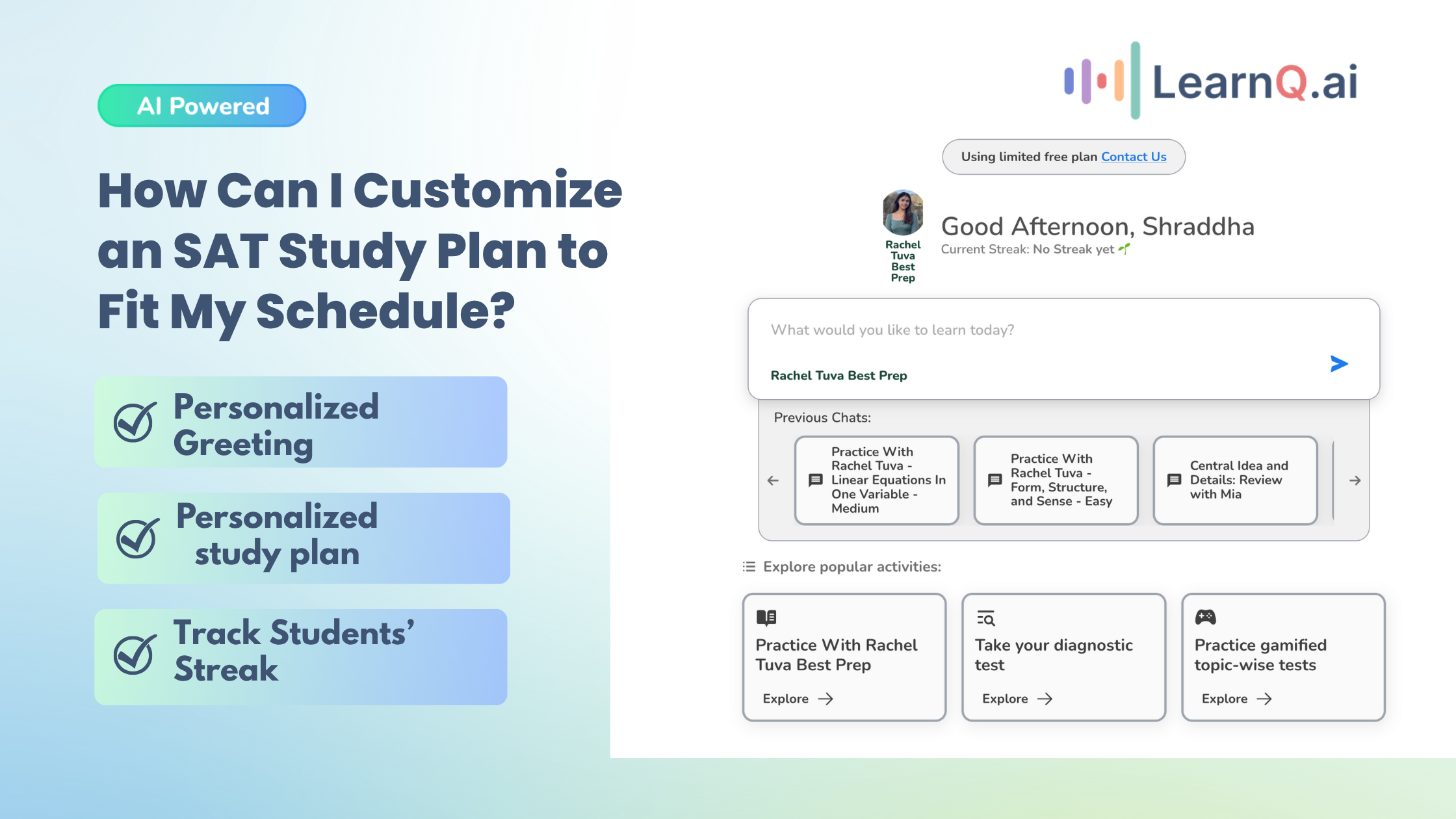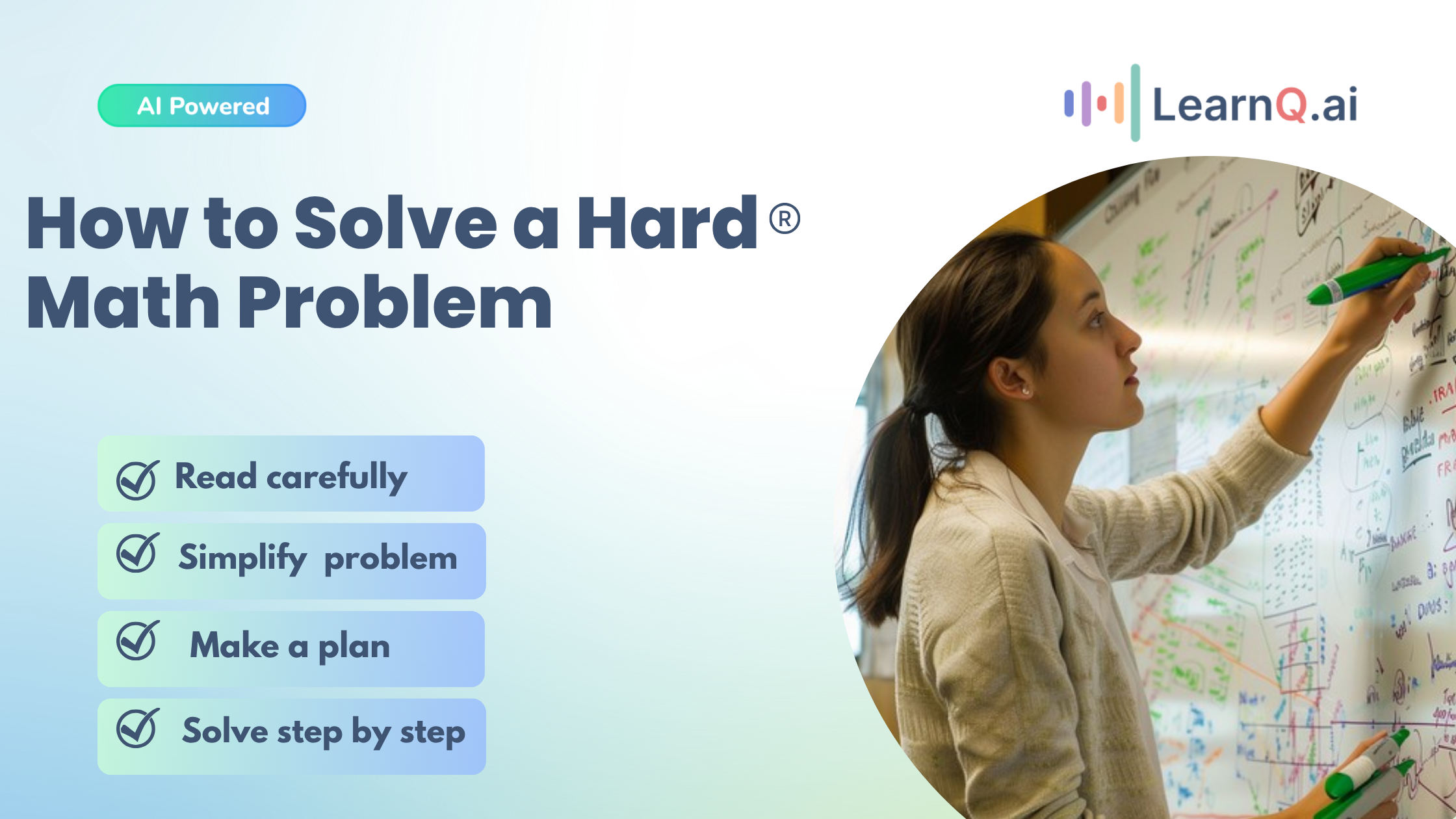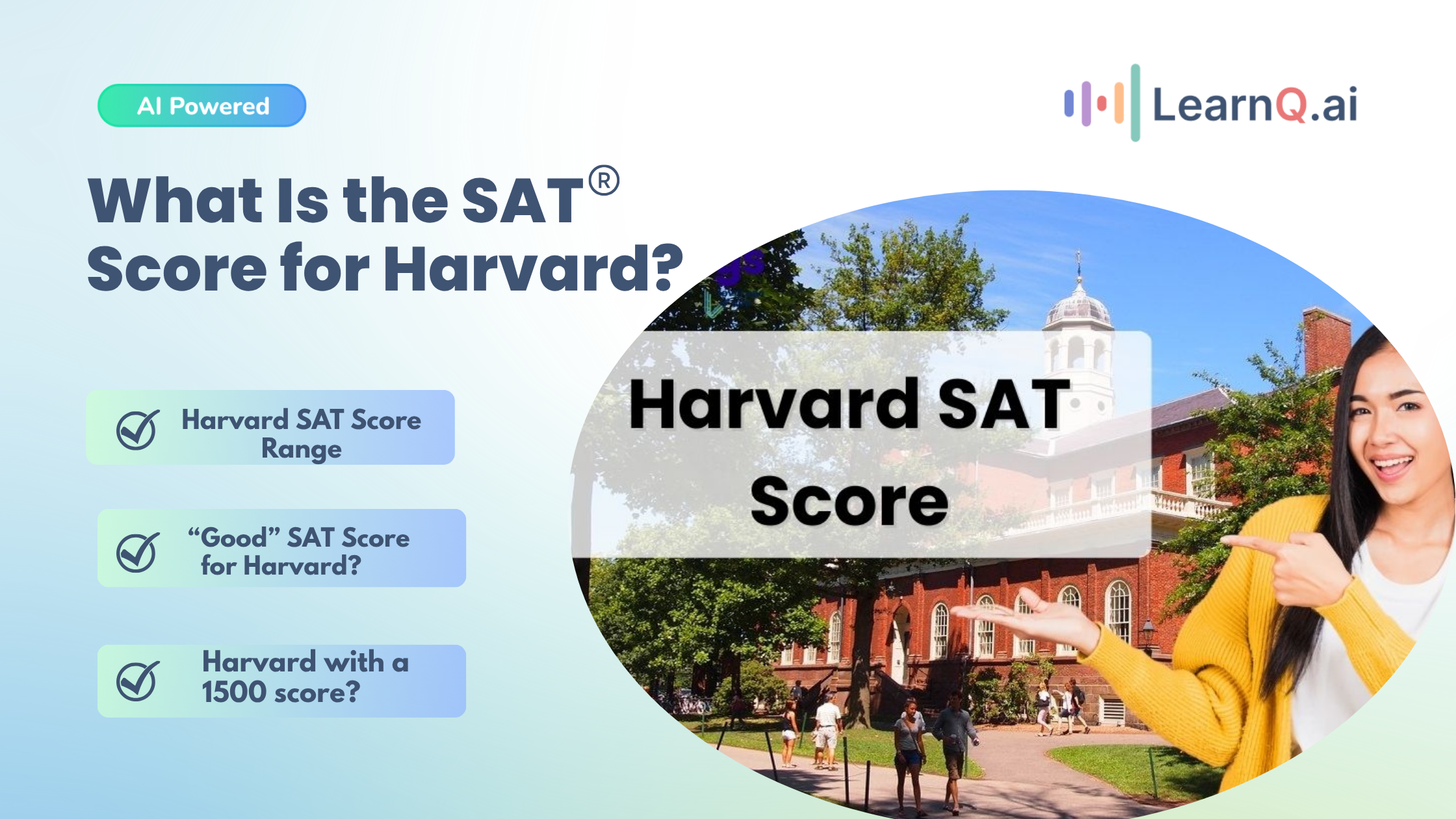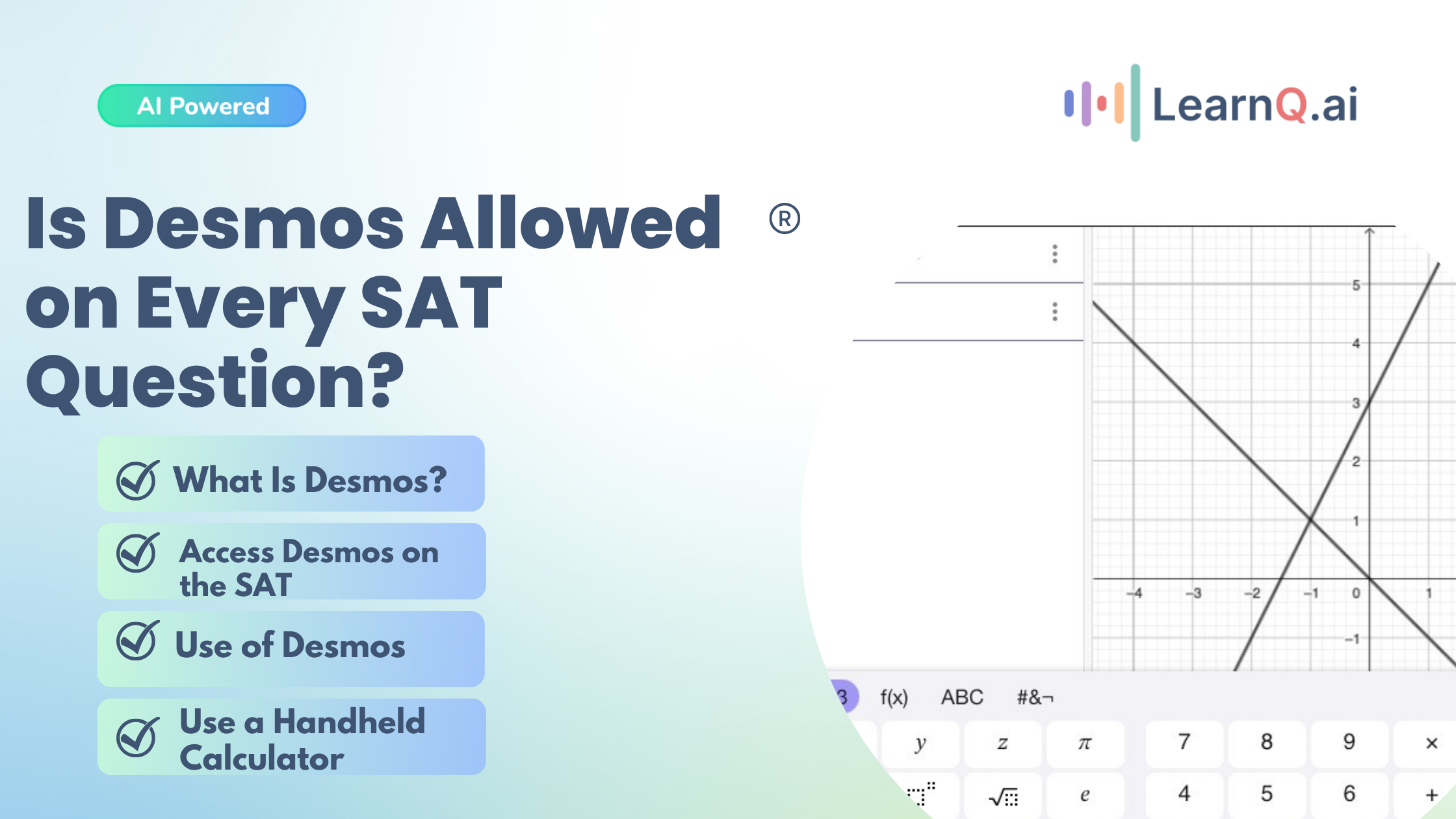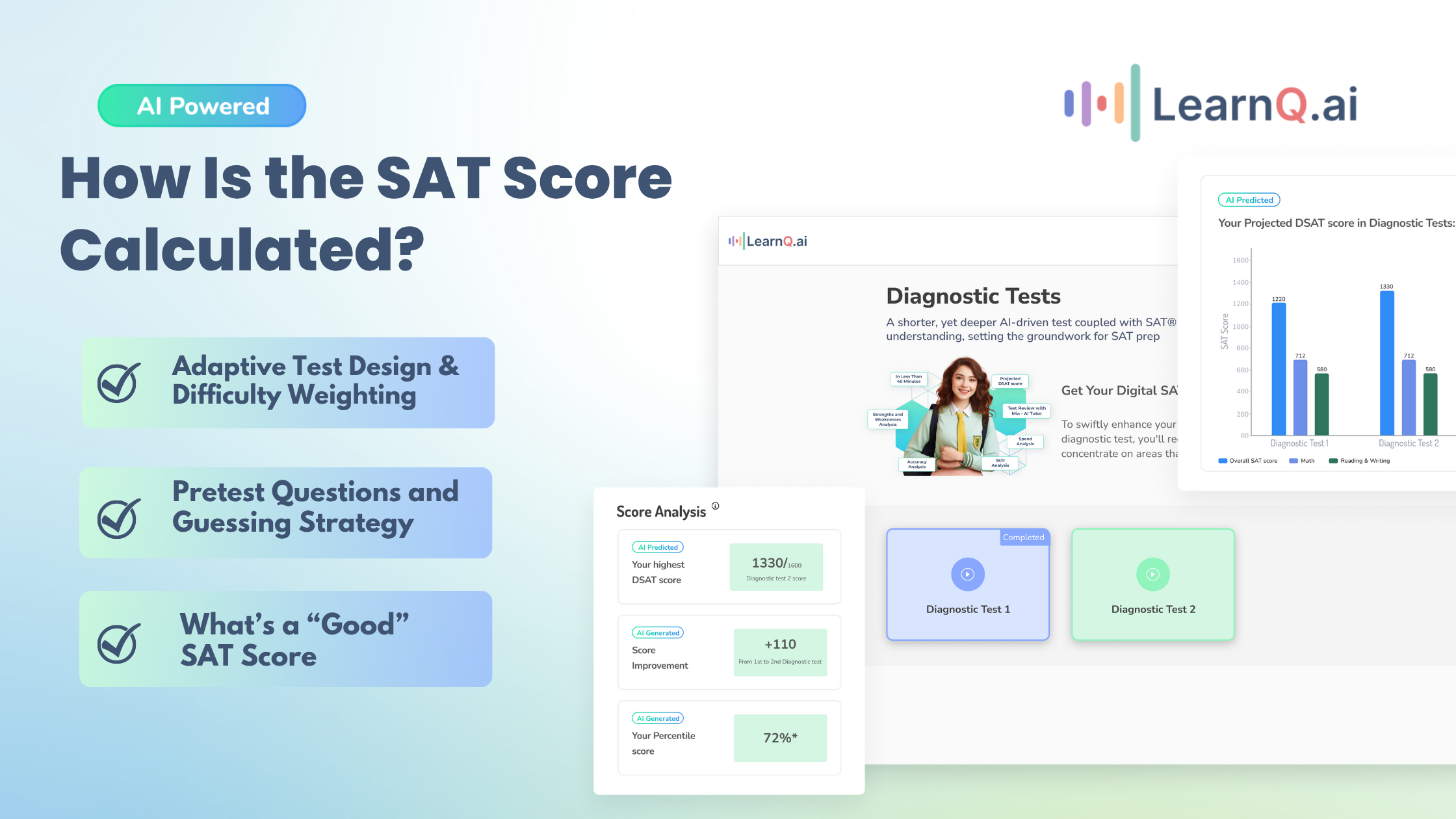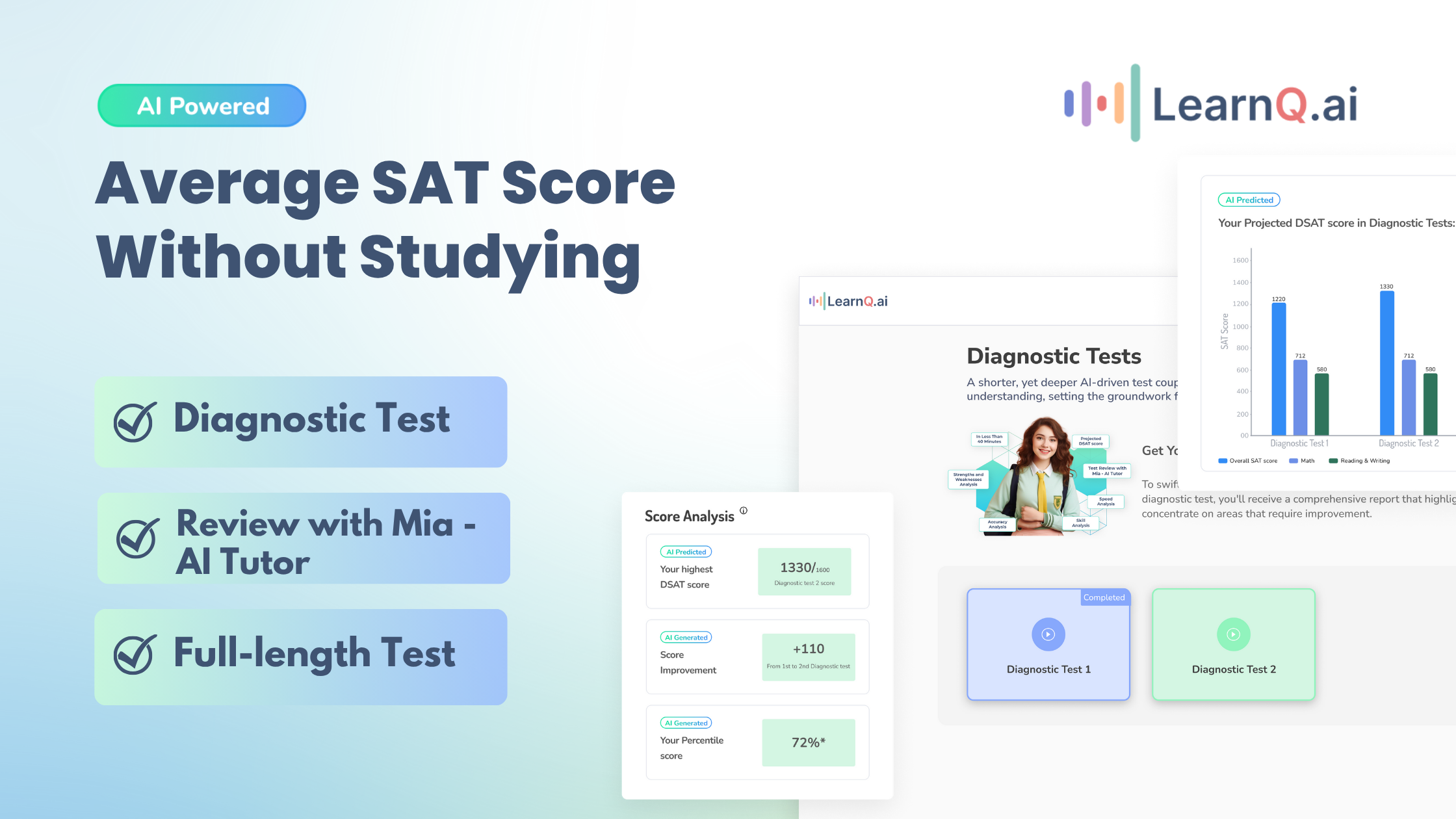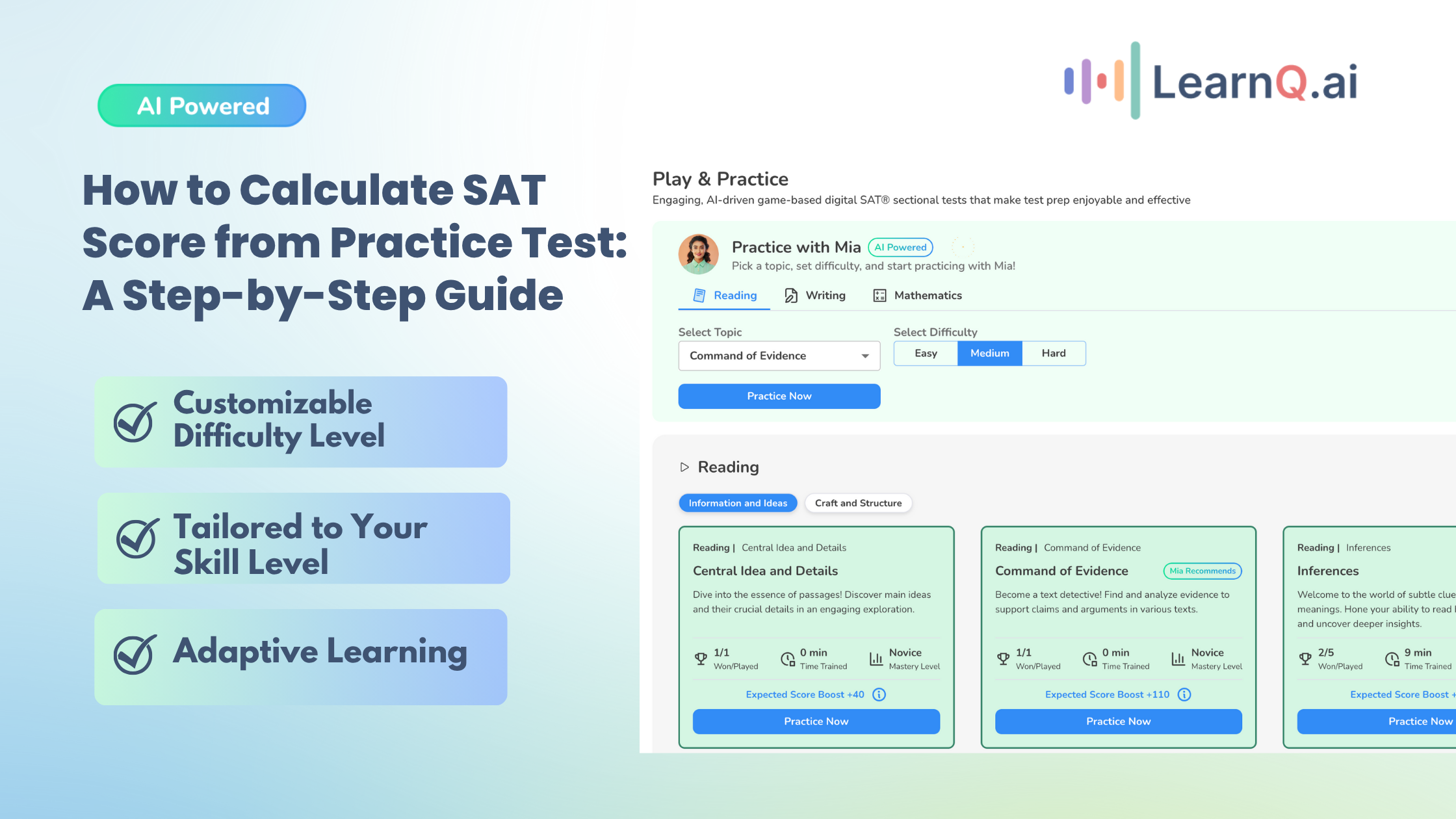Ever tried talking to your computer and it actually talks back? No, you’re not in a sci-fi movie—you’re just witnessing AI in education!
AI aka Artificial Intelligence is redefining education by offering tools and methodologies that significantly enhance the teaching and learning experience. Mastering these tools is critical for students and educators since AI is the undisputed future of global education!
AI involves simulating human intelligence in machines programmed to think like humans and mimic their actions. This translates to technologies that can perform tasks such as recognizing speech, learning, planning, offering real-time feedback, and problem-solving.
These capabilities allow AI systems to provide customized educational experiences, adapting to the needs of each learner.
The Transformative Role of AI Tools in Education
Using this holds transformative potential for education, offering multiple benefits. We’ve broken down those benefits for you. Have a look at how AI can benefit you!
For Students:
- Personalized learning paths: AI can analyze students’ performance and tailor content to challenge them appropriately, ensuring a more effective learning process. A compelling example of this is the “ASSISTments” study by SRI International for the U.S. Department of Education, which found that students using AI-based homework assistance saw a significant improvement in their mathematics test scores
- Engagement and motivation: AI tools can make learning more engaging through interactive content and games, potentially increasing student motivation and persistence
Preparing for the Digital SAT but find studying monotonous? If so, try the Play and Practice feature on LearnQ.ai. The platform has gamified learning through AI, which makes studying and understanding SAT practice questions fun!
For Teachers:
- Insightful data analysis: AI can offer deep insights into student performance, helping teachers identify areas where students struggle and succeed, enabling more targeted teaching strategies
- Reduced administrative burden: Automated grading and attendance can save teachers considerable time
Curious about saving time with AI? LearnQ.ai’s dashboard streamlines SAT prep management for educators.
Overview of How AI is Democratizing Access to Educational Tools
Using AI for students & teachers is making high-quality education more accessible worldwide. Don’t believe us? Let’s serve you with some facts about how AI is breaking down the barriers that have historically limited access to education:
- Global access to quality education: AI-powered online learning platforms can reach underserved regions, offering courses from basic literacy to advanced degrees without the need for physical infrastructure
- Support for diverse learning needs: AI’s ability to customize learning experiences is particularly beneficial for students with disabilities or those who need additional support, providing them with the same opportunities for success as their peers
Why Educators Need to Understand AI Tools?
For educators, integrating AI tools into their teaching style extends beyond learning these tools to stay up-to-date with technology. It is a gateway to achieving educational excellence and giving students much more time than teachers can because of the administrative load they have to deal with!
Understanding AI’s Impact on Teaching
AI for Students & Teachers, especially teachers, has changed the face of education by offering:
- Customized learning experiences: AI enables educators to tailor the learning journey to meet each student’s unique needs
- Efficiency and insights: AI applications can alleviate the burden of time-consuming tasks, such as grading and record-keeping
- Enhanced engagement: The introduction of AI-driven tools into the classroom, including simulations and educational games, can heighten student engagement and foster a deeper understanding of complex subjects.
AI’s Ethical and Responsible Use in Classrooms
The use of AI for students and teachers is definitely the future, but integrating AI into educational practices also brings specific challenges to the forefront. The most critical ones have been discussed below.
- Ethical considerations: Educators must model the ethical application of AI tools, ensuring these technologies are devoid of biases and maintaining transparency in the utilization of student data
- Data privacy and security: The advent of AI in education necessitates stringent measures to protect student data, with educators required to be well-versed in data protection statutes and practices to thwart unauthorized access
- Preparing students for the future: Understanding AI extends beyond the classroom’s immediate benefits, equipping students for a future where AI literacy is indispensable across myriad sectors.
How Can AI Enhance Teaching Processes?
This can be a boon if educators understand how AI can benefit them. We took it upon ourselves to inform you of those benefits. Here’s a closer examination of AI’s pivotal roles in enhancing teaching processes!
Personalized Learning Using AI-Driven Analytics
One of the most heralded benefits of introducing such concept in education is its ability to facilitate personalized learning through AI-driven analytics tools. These tools:
- Scrutinize data on students’ learning patterns, performance metrics, and preferences
- Allow educational content to be customized for each learner’s unique needs
In fact, research conducted by the Stanford Graduate School of Education, detailed in their 2020 report, demonstrates that personalized learning environments powered by AI can significantly improve student engagement and academic performance. This study highlighted how AI systems, through adaptive learning technologies, could dynamically adjust the difficulty level of tasks based on student performance, ensuring an optimal challenge level for each learner.
Increasing Productivity and Efficiency by Freeing Up Time
The administrative load on educators is substantial, detracting from time that could otherwise be spent teaching or directly engaging with students. AI offers a solution by automating routine tasks such as grading, attendance, and even certain aspects of communication with students.
A survey by McKinsey & Company provides a vivid illustration of the current state of educators’ workload, revealing that teachers work approximately 50 hours a week, with less than half of that time spent directly interacting with students. The breakdown is as follows:
| Activity | Hours/Week |
| Preparation | 10.5 |
| Evaluation and feedback | 6.5 |
| Professional development | 3 |
| Administration | 5 |
| Student instruction and engagement | 16.5 |
| Student behavioral, social, and emotional skill development | 3.5 |
| Student coaching and advisement | 4.5 |
This translates to only 49% of teachers’ time being dedicated to direct student interaction. The implication is clear: by harnessing AI for tasks such as evaluation, feedback, preparation, and administration, teachers could significantly increase their direct engagement with students.
LearnQ.ai is Powered by VEGA AI—Is your Institute Next?
Give students a Duolingo-style test-prep platform with Shopify-level customization for tutors and institutes.
Creating and Supplementing Content: Generating Educational Resources Using AI
AI’s capability to assist in content creation and curation is another game-changer for educators. This can analyze curricular goals and learning objectives to generate or recommend supplementary materials that align with the lesson’s themes and students’ learning stages.
Such technologies ensure the relevance and timeliness of educational content and introduce various perspectives and resources that might not have been accessible otherwise.
AI-Driven Simulations for a Hands-On Learning Experience
AI-driven simulations offer a revolutionary approach to experiential learning. It enables students to explore complex concepts in a virtual environment. This method is particularly effective in fields such as science, engineering, and medicine, where practical experience is invaluable.
A compelling example is the use of AI in medical education, where certain platforms provide detailed surgical simulations. AI-driven tools allow students to practice procedures risk-free, enhancing their understanding and proficiency.
The immersive nature of simulation-based learning powered by AI engages students. It prepares them for real-world applications of their knowledge, bridging the gap between theoretical understanding and practical application.
Platform Providing Best AI Tools for Enhanced Classroom Interaction
As the search for more effective, personalized, and streamlined educational methods intensifies, AI For Students & Teachers presents a range of solutions that promise to elevate the teaching and learning experience.
From specialized platforms enhancing standardized test preparation to digital assistants providing immediate learning insights, AI tools are at the forefront of educational innovation. Have a look!
LearnQ.ai
LearnQ.ai is a great platform that leverages AI For Students & Teachers to deliver results. The platform has revolutionized digital SAT prep with AI-driven tools, offering personalized learning that adapts to each student’s unique needs and supporting tutors.
- The customized learning paths utilize AI algorithms to tailor study plans, focusing on students’ strengths and weaknesses
- Adaptive learning technology adjusts content based on performance and the results in a personalized study regimen, maximizing learning efficiency
- Immediate, actionable feedback helps students learn from mistakes and improve strategies
- In-depth analytics, including projected scores, guide targeted preparation
- Mia, an AI tutor, is a standout feature of LearnQ.ai, offering 24/7 personalized assistance and detailed explanations in multiple languages. Powered by GPT-4, she enhances the learning experience with interactive support and tailored help
LearnQ.ai emphasizes compatibility with students’ broader academic and extracurricular schedules through:
- Adaptive scheduling: Fits SAT prep around other commitments.
- Curriculum compatibility: Aligns with school curriculums, aiding concurrent academic success.
Also Read: Top SAT Prep Books to Boost Your Score
ChatGPT
Next on our list of platforms that have revolutionized the use of AI for students & teachers is ChatGPT. Here’s how the platform has changed the world of education.
- Role-playing: ChatGPT can simulate various characters in historical events or scientific discoveries, providing a unique, immersive learning experience
- Creating quizzes and lesson plans: It assists in generating custom quizzes and detailed lesson plans, saving educators time and ensuring materials are tailored to students’ learning levels
- Aiding non-english speakers: ChatGPT helps break down language barriers, offering explanations, translations, and support to non-English speaking students, thus making learning more accessible
Slidesgo and Beautiful AI
Slidesgo and Beautiful AI provide free, professionally designed templates for educators to create engaging presentations. These platforms feature automated slide production, making it easier for teachers to convey complex information in a visually appealing format, thereby enhancing student comprehension and interest.
Canva Magic Write
Canva Magic Write incorporates an AI text-to-image generator, a valuable tool for educators looking to integrate creative visuals into their lesson plans. This feature aids in creating custom images that align with lesson content, stimulating student engagement and fostering a creative learning environment.
Quizizz and Yippity
Next on the list of platforms that have made the use of AI for students & teachers simpler are Quizizz and Yippity. Both these platforms utilize AI to design quizzes and lessons that adapt to each student’s individual learning progress and needs.
These platforms offer real-time feedback and personalized paths, making learning more effective by:
- Focusing on areas where the student needs improvement
- Reinforcing concepts they have already mastered
Gradescope
Gradescope is another platform that simplifies the use of AI for students & teachers. It does so by taking advantage of the assessment process with AI-powered tools. These tools facilitate peer assessment and comprehensive assessment management. The platform also streamlines grading by:
- Automating repetitive tasks
- Providing detailed analytics on student performance, enabling educators to offer more personalized feedback and support
Copilot Education
Copilot Education utilizes AI to deeply understand educational content and student performance, enabling it to generate lesson plans finely tuned to the curriculum and individual learning objectives.
This platform stands out by:
- Analyzing student data to identify learning gaps and strengths
- Offering dynamic lesson adjustments based on real-time feedback and assessments
- Integrating with existing educational standards to ensure compliance and relevance
EduAide.Ai
EduAide.Ai is another great platform that makes AI For Students & Teachers simple and engaging. The platform distinguishes itself by providing AI-driven content creation that supports multiple languages, making it especially valuable in diverse educational settings. Key features include:
- An extensive library of subject-specific content that can be adapted to different languages
- Tools for creating interactive and multimedia-rich lessons that cater to varied learning preferences
- Capability to tailor educational materials for students with varying levels of proficiency in the classroom’s primary language of instruction
Curipod
Curipod offers a suite of tools designed to create interactive lessons that foster student engagement through:
- Interactive modules and games that can be embedded directly into lesson plans
- Customizable templates that allow for the integration of various media types, including video, audio, and interactive quizzes
- Analytics tools to track student engagement and progress, enabling teachers to refine lessons based on empirical data
MagicSchool.ai
MagicSchool.ai provides an innovative platform that simplifies the use of AI for students & teachers by creating immersive learning experiences with features such as:
- Virtual reality (VR) and augmented reality (AR) capabilities to create engaging and immersive educational content
- AI-driven personalization that adjusts the learning environment and content in real time based on student interactions and performance
- Tools for educators to create and manage virtual classrooms, including AI assistants that can guide students through lessons and provide support
Adobe Express with Firefly
Adobe Express with Firefly enhances visual tasks by enabling educators and students to effortlessly create stunning graphics and visual content. Key functionalities include:
- A user-friendly interface for designing classroom materials, presentations, and social media content
- AI-powered design suggestions and image enhancements to streamline the creative process
Bing Image Creator
Bing Image Creator leverages AI For Students & Teachers to transform textual descriptions into detailed images, providing a unique tool for:
- Enhancing creative writing assignments with visual content generated directly from students’ descriptions
- Supporting subjects like history or science by creating visual aids that illustrate complex concepts or historical events
Turnitin
Turnitin remains the gold standard in AI-driven tools for ensuring academic integrity, with the below-listed functionalities that go beyond simple plagiarism detection:
- Formative feedback: Turnitin’s Feedback Studio provides in-depth comments on student submissions, highlighting areas of strength and suggesting improvements, which helps in developing critical thinking and writing skills
- Originality reports: These reports are nuanced, offering not just a similarity percentage but a detailed breakdown of matches, which educators can use to teach students about proper citation practices, paraphrasing, and the value of original analysis
Also Read: Top 5 AI Powered Digital SAT Providers
Enhance your Digital SAT study routine with AI-driven insights and personalized practice tests.
AI For Students & Teachers: Encouraging Critical Thinking
In an era where it’s becoming increasingly essential to use AI For Students & Teachers, instilling a foundation of critical thinking and ethical AI usage is paramount. It’s the responsibility of educators to prepare students for a future where AI is ubiquitous and use it thoughtfully and responsibly.
Here’s how educators can approach this vital educational objective.
Teaching Students About Critical Thinking and Responsible AI Tool Usage
Critical thinking skills are essential in discerning the reliability and ethical implications of AI-generated information and tools.
Here’s how you can foster these skills:
- Start by demystifying AI for your students. Discussions can include how AI algorithms work, the data they use, and the importance of questioning the sources and potential biases within AI systems
- Engage students with scenarios that require them to apply ethical guidelines to AI usage, encouraging them to consider the broader impacts of AI technologies on society
Fostering a Culture of Ethical Experimentation with AI in Education
Creating an environment where students feel empowered to experiment with AI ethically involves several key steps:
- Establish clear guidelines: Develop a set of ethical guidelines for AI experimentation in class, ensuring students understand the importance of integrity, privacy, and respect for intellectual property
- Hands-on AI projects: Encourage projects that allow students to use AI tools to solve problems or create new content
- Reflection and discussion: Incorporate regular reflection and discussion sessions where students can share their experiences, challenges, and learnings from experimenting with AI
Prompts and Exercises to Help Students Engage with AI-Generated Content
To actively engage students in critical thinking about AI-generated content, consider these approaches:
- Analyzing AI-generated texts: Provide students with AI-generated articles or stories and ask them to identify aspects that might indicate the content was machine-generated, such as lack of depth, anomalies, or biases
- Creative use of AI: Assign projects where students use AI to generate creative works and critically analyze the process and outcome. This can include discussions on AI’s creative limitations and the human elements that AI cannot replicate.

The Future of AI in Education
Widespread use of AI For Students & Teachers is an inevitable future. Let’s explore how this not-so-distant future will affect education!
Emerging AI Technologies and Their Potential Impact on Personalized Learning
The frontier of AI for students & teachers in education is marked by advancements that promise unprecedented levels of personalization:
- Adaptive learning platforms: Innovations in AI lead to developing platforms that can precisely adapt to individual student needs, learning styles, and pace. LearnQ.ai, for instance, analyzes real-time data from student interactions, dynamically adjusting content to address learning gaps and challenge students appropriately
- Predictive analytics: Future AI systems will employ sophisticated predictive analytics to foresee student challenges before they become impediments, allowing educators to provide targeted interventions. By analyzing patterns in student data, AI can predict outcomes and suggest optimal learning paths
Plans and Predictions for AI-Powered Simulations in Education
AI’s role in creating immersive learning experiences through simulations heralds a new era of educational engagement:
- Immersive simulations: Advances in AI will enable the creation of highly realistic simulations and virtual environments for subjects ranging from history to biology
- Intelligent AI Aids: Future classrooms will benefit from AI aids that act as personal learning assistants for students, offering real-time assistance, explanations, and resources
Building AI-Powered Educational Environments for Collaborative Learning
The use of AI For Students & Teachers will encompass not just personalization and simulation but also the fostering of collaborative learning environments by:
- Facilitating collaboration through AI: Emerging AI technologies will support platforms that enhance student collaboration, regardless of geographical barriers. AI can manage group projects, facilitate peer learning, and create collaborative problem-solving environments that mimic real-world scenarios
- Using AI as a collaborative partner: AI is expected to evolve from a tool into a collaborative partner in the learning process. AI-powered systems could participate in brainstorming sessions, offer creative ideas, and even assess the effectiveness of group collaboration, enriching the learning experience and fostering a culture of teamwork and innovation
In fact, The Future of Life Institute has discussed the evolving role of AI in education, suggesting that AI will transition from a passive tool to an active learning partner. This involves AI systems capable of generating creative ideas, participating in problem-solving, and providing feedback that mirrors human intuition and insight, thereby enriching the collaborative learning experience.
LearnQ.ai is powered by VEGA AI—Is your institute next?
Offer students a Duolingo-style test-prep platform with Shopify-level customization for tutors and institutes.






Conclusion
Just as popularizing the use of AI For Students and teachers has benefits, there are also challenges.
AI, after all, is not just a technological tool but also a catalyst for a more personalized, efficient, and experiential learning environment. By embracing AI, educators can transform their teaching methodologies, offering students a learning journey tailored to their needs. At the same time, it’s their job to make students understand why the ethical use of AI is paramount.
Still wondering how can AI particularly benefit you? If yes, contact LearnQ.ai experts today. Our data-driven approach has not only made digital SAT simpler and more engaging but has also taken learning to the next level through an advanced tutor, Mia.

